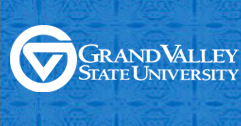MRV AT GV: Developing a Framework for Organizational Adoption of Mixed Reality Video Production
Location
Hager-Lubbers Exhibition Hall
Description
BACKGROUND AND PURPOSE: The consumer availability of virtual reality (VR) is drastically changing the way we interact with digital media. Research has found VR to be effective in providing students with dynamic visualizations of complex structures such as anatomical diagrams and abstract data models. However, VR experiences are not universally accessible for students with chronic migraines, vision impairments, motion sickness, or those who live off-campus as part of an online/hybrid learning program. This project explores Mixed Reality Video (MRV) production as a potential bridge in this accessibility gap. Mixed reality allows videographers to record their subjects interacting with VR applications from a third person perspective. Mixed reality lecture videos can show an instructor wearing a VR headset while also showing any virtual objects they manipulate. PROCEDURES: A mixed reality studio space was built within an organization (Grand Valley State University) that is capable of high definition MRV production with a variety of different VR applications. OUTCOME: A sizzle reel of MRV test footage was produced in addition to an in-depth manual that outlines the studio configuration and production workflow necessary to make mixed reality videos. The framework that was used for this studio setup is applicable to any organization that seeks a cost-effective way to create a library of mixed reality video content. IMPACT: Organizational adoption of MRV would allow teachers and medical professionals to create mixed reality demonstrations for their students or patients that are streamable as traditional 2D videos and require no VR hardware to view.
MRV AT GV: Developing a Framework for Organizational Adoption of Mixed Reality Video Production
Hager-Lubbers Exhibition Hall
BACKGROUND AND PURPOSE: The consumer availability of virtual reality (VR) is drastically changing the way we interact with digital media. Research has found VR to be effective in providing students with dynamic visualizations of complex structures such as anatomical diagrams and abstract data models. However, VR experiences are not universally accessible for students with chronic migraines, vision impairments, motion sickness, or those who live off-campus as part of an online/hybrid learning program. This project explores Mixed Reality Video (MRV) production as a potential bridge in this accessibility gap. Mixed reality allows videographers to record their subjects interacting with VR applications from a third person perspective. Mixed reality lecture videos can show an instructor wearing a VR headset while also showing any virtual objects they manipulate. PROCEDURES: A mixed reality studio space was built within an organization (Grand Valley State University) that is capable of high definition MRV production with a variety of different VR applications. OUTCOME: A sizzle reel of MRV test footage was produced in addition to an in-depth manual that outlines the studio configuration and production workflow necessary to make mixed reality videos. The framework that was used for this studio setup is applicable to any organization that seeks a cost-effective way to create a library of mixed reality video content. IMPACT: Organizational adoption of MRV would allow teachers and medical professionals to create mixed reality demonstrations for their students or patients that are streamable as traditional 2D videos and require no VR hardware to view.
